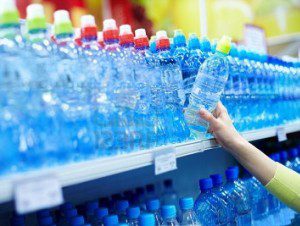By Lee Flynn
Guest Writer for Wake Up World
Preparing yourself, your family, and even your community for an unexpected disaster is gaining a lot of popularity.
Water storage is at the heart of emergency preparation. The truth is that after an emergency drinking water, that will not make you ill, will probably be very scarce. Therefore purifying and storing water properly is an essential knowledge core that must be adhered to now.
According to experts, each person in the household will need to have at least 1 gallon of water per day. And don’t forget about your pets, the 1 gallon role applies to them as well. If there are pregnant women, persons with illnesses, or if you live in hot climates, then more than 1 gallon of water may be necessary. A minimum water storage requirement has been set at three days by the CDC.
[pro_ad_display_adzone id=”110028″]
Storing water in pre-bought containers from the store which remain sealed is the best way to do this. These bottles are reliable and if unopened can remain tin storage for up to half a year. Preparing and storing water on your own can also be reliable as long as the proper containers are used. Make sure you only use food grade storage containers which have been specially designed for storing water.
Before you simply put water in a container with your food storage, the container must be cleaned through proper procedures. Use dish soap to properly clean and disinfect the inside of the container. Then use one teaspoon of household unscented bleach mixed with one quart of water. Place it in the container and shake it up so it touches all surfaces. Pour out the water and let it air dry before use.
Once the water container has been thoroughly cleaned you can add your drinking water and seal it tightly. Keep the water stored in a cool place out of direct sunlight. Take notice of your surroundings and don’t store your water near pesticides, chemicals, gasoline, or other things like that.
In case of an emergency – one where you don’t have proper water storage – here are some tips to make water drinkable.
Boiling
Boiling is an effective way to make water drinkable. It’s probably the best way to kill all the diseases in water which can make you sick. First make sure the water is free of any large substances by filtering it through a cloth or paper towel. Bring the water to a boil for one minute, or three minutes if it’s over 6500 feet. After the water cools you can store it and drink it safely.
Disinfectants
When boiling is not an option then you can add chemicals to the water to make it drinkable. Iodine and unscented chlorine bleach are the two popular solutions that can be used in most households. Viruses and bacteria are killed quickly by these substances, but they don’t kill everything like parasites so be aware of that. 1/8 teaspoon of chlorine for every gallon of water should be used. Let the treated water stand for about 30 minutes before you drink it.
Filtering
The key to successfully filtering water is choosing filters with very small pore sizes. These poor sizes prevent viruses and bacteria from gaining access to the final water product. Portable water filters rarely catch viruses, so when possible add chlorine or iodine to filtered water to ensure its safety.
On a final note, it’s important to have some additional water resources you can turn to in case an emergency arises and you’re not prepared. Possible water sources include things that can be found inside as well as outside your home. Check your water heater tank, water from the toilets (not the toilet bowl) and water from cans of veggies and fruit. Outside sources may include rainwater, water from streams and rivers, as well as local natural springs.
All of the water from these sources should be treated by boiling and/or chemically before any consumption takes place. If the water presents with an unusual color or odor do not consume.
About the author:
Lee Flynn is a freelance emergency preparedness writer and outdoor enthusiast.
Visit Lee’s website thrivelife.com or connecet with Lee on Google Plus.
[pro_ad_display_adzone id=”110027″]







